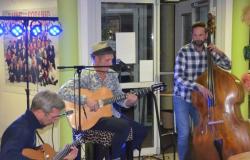LG has won more than 20 CES 2025 Innovation Awards across a range of products, including six for its OLED TV. These awards include the award for best innovation in the video screen category. This means the product has received this honor three years in a row and has consistently won at least one award for over a decade.
Four of LG’s 2,025 OLED TVs were recently spotted by , a Reddit user at a certification body in the Republic of Korea. There were 55- and 65-inch versions of the C5, which will follow the 2024 C4 2024 C4de 2024, with models named LG OLED55C5KNA and LG OLED65C5KNA. There were also two G5 TVs, the LG OLED55G5KNA and LG OLED65G5KNA. Images found in the database suggest that the C5 and G5 will have a similar foot design to their predecessors. Other than that, no other details about the TVs have been revealed.
Other CES 2025 Innovation Award winners include LG’s webOS smart TV platform, CineBeam projector and the brand’s Self-Driving AI Home Hub. LG is expected to reveal more details about its 2025 OLED TV just before or during CES 2025, which will be held in Las Vegas from January 7-11. In the meantime, you can consider purchasing the 65-inch LG OLED evo C4 Smart TV 2024, which is currently available for $1,496.99 on Amazon; its original MSRP was $2,699.99.
Belgium






